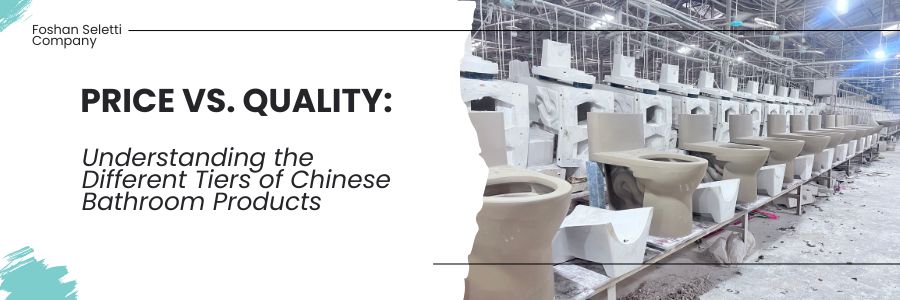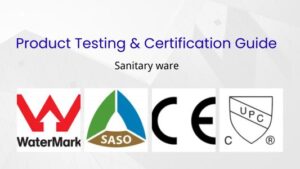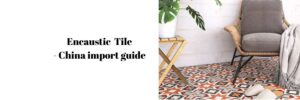Why Do Chinese Bathroom Products Vary So Much in Price and Quality?
As someone who’s spent several years on exporting sanitary ware in China, I’ve seen everything from incredibly cheap toilets that fall apart within months to luxury pieces that rival anything made in Europe. The price range is enormous, and it often leaves new importers confused.
“How can the same product cost $20 from one factory and $200 from another? Is the expensive one really worth 10 times more?”
These are questions I get all the time, and the answer isn’t always straightforward. In this guide, I’ll break down the different quality tiers of Chinese bathroom products, helping you understand exactly what you get at each price point.
If you’ve read my Ultimate Guide to Chinese Sanitary Ware Brands for Importers, you already know the top manufacturers. Now let’s look at what separates premium products from budget options across the entire industry.
How Are Chinese Bathroom Products Categorized by Quality?
Chinese manufacturers typically divide their products into three or four quality tiers. While the exact terminology varies between factories, here’s how I categorize them based on my experience:
1. Entry-Level/Budget Tier
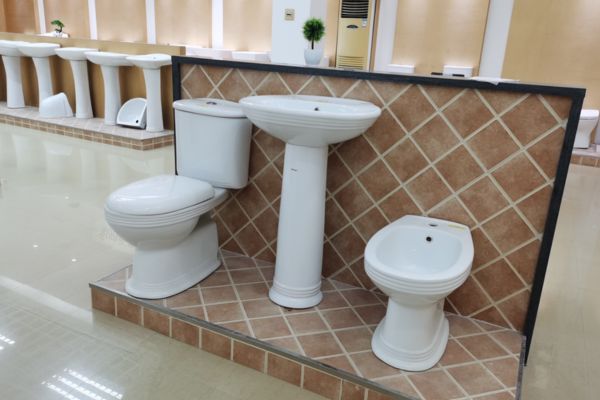

Price Point:
- Toilets: $20-40 FOB
- Bathroom Sinks: $5-10 FOB
- Faucets: $5-20 FOB
Characteristics:
- Basic designs and functions
- Simplified manufacturing processes
- Minimal quality control
- Limited or no warranty support
- Basic packaging
Best For:
- Temporary installations
- Rental properties with high turnover
- Projects with severe budget constraints
- Markets where initial price is the only consideration
What You’re Getting: When you buy at this tier, you’re getting functional products that meet basic requirements, but don’t expect longevity or refined aesthetics. These products often use lower-grade ceramics with thinner walls, simpler glazing techniques, and basic mechanical components.
2. Mid-Range/Standard Tier
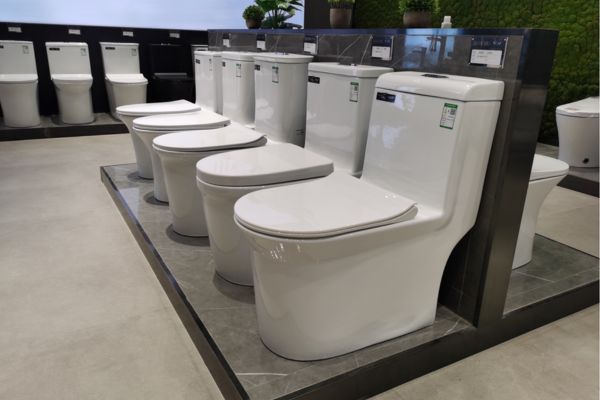

Price Point:
- Toilets: $40-100 FOB
- Bathroom Sinks: $10-50 FOB
- Faucets: $20-50 FOB
Characteristics:
- Improved designs and durability
- Better materials and components
- More consistent manufacturing
- Basic quality inspection systems
- 1-2 year limited warranties
- Decent packaging for export
Best For:
- Standard residential applications
- Mid-range renovation projects
- Entry-level export markets
- Small hotels and apartments
What You’re Getting: This tier represents the sweet spot for many importers. The products are reasonably durable with acceptable aesthetics and functionality. They’re manufactured with proper quality control procedures and generally meet international standards. You’ll find many of the small to medium manufacturers from Chaozhou (which I discussed in my article on reliable small and medium size sanitary ware manufacturers) operating in this tier.
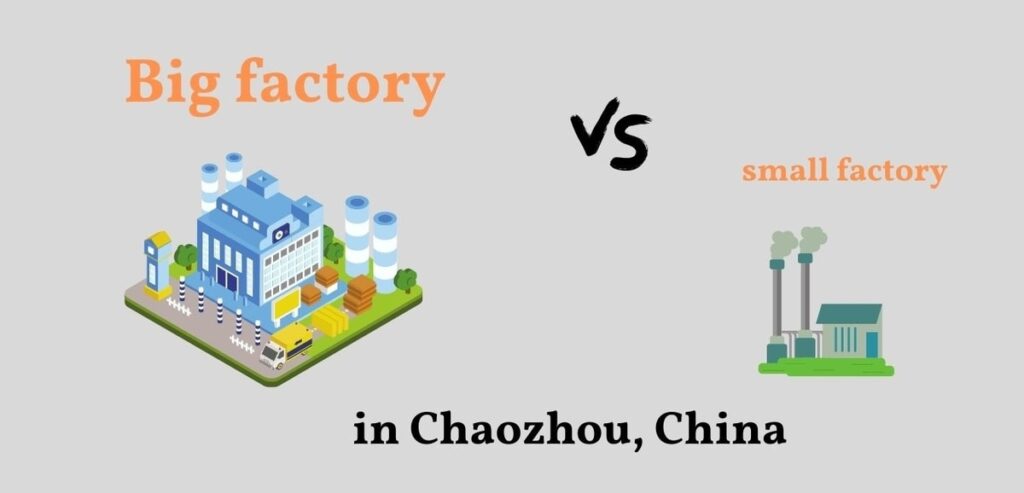

3. High-End/Premium Tier
Price Point:
- Toilets: $101-300 FOB
- Bathroom Sinks: $50-200 FOB
- Faucets: $50-120 FOB
Characteristics:
- Superior design and aesthetics
- High-quality materials and components
- Advanced manufacturing processes
- Comprehensive quality control systems
- Extended warranties (3-5 years)
- Export-grade protective packaging
Best For:
- Upscale residential projects
- Boutique hotels
- Higher-end retail sales
- Projects where aesthetics and durability are priorities
What You’re Getting: Premium tier products from Chinese manufacturers typically offer excellent value compared to European or American equivalents. These products feature higher-grade ceramic materials, precision manufacturing, superior glazing, and better mechanical components. Many top-tier manufacturers like TOTO China and Dongpeng (featured in our Top 10 Sanitary Ware Manufacturers guide) operate primarily in this segment.
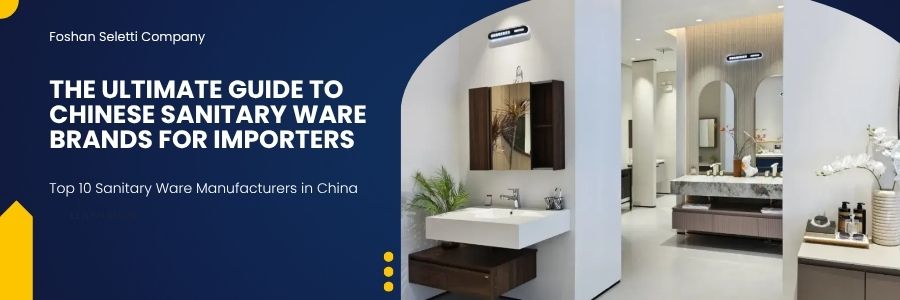

4. Luxury/Ultra-Premium Tier
Price Point:
- Toilets: $300-800+ FOB
- Bathroom Sinks: $200-500+ FOB
- Faucets: $120-300+ FOB
Characteristics:
- Cutting-edge design and technology
- Highest grade materials
- State-of-the-art manufacturing
- Rigorous quality testing
- Comprehensive warranties (5+ years)
- Premium packaging and presentation
Best For:
- Luxury residences
- Five-star hotels
- High-end commercial properties
- Brand-conscious markets
What You’re Getting: At this tier, Chinese manufacturers are producing products that compete directly with top global brands. You’ll find smart toilets with advanced features, designer bathroom sinks with perfect finishes, and faucets with sophisticated electronics and flawless plating. These products undergo extensive testing and quality control, with rejection rates sometimes exceeding 20% during production.
What Factors Determine Quality Tiers in Chinese Bathroom Products?
Understanding the key factors that separate different quality tiers can help you make informed decisions when sourcing products. Here’s what matters most:
Material Quality
The quality of raw materials has a profound impact on the final product. Here’s what changes as you move up the tiers:
Ceramics:
- Budget: Lower-grade clay with more impurities, thinner walls
- Mid-Range: Better clay composition, standard thickness
- Premium: High-grade porcelain with fewer impurities, optimal thickness
- Luxury: Finest porcelain blends, perfectly consistent thickness
Metals:
- Budget: Lower-grade brass or zinc alloy, thin chrome plating
- Mid-Range: Standard brass composition, adequate plating thickness
- Premium: High-quality brass, superior plating technology
- Luxury: Premium brass alloys, multiple-layer plating processes
Plastics:
- Budget: Basic ABS plastics
- Mid-Range: Better-grade ABS and PP materials
- Premium: Engineering-grade plastics with additives for durability
- Luxury: Advanced composite materials, UV and chemical resistant
Manufacturing Processes
Production processes become more sophisticated and tightly controlled as you move up the quality ladder:
Ceramics:
- Budget: Faster firing cycles, basic glazing
- Mid-Range: Standard firing protocols, even glazing
- Premium: Optimized firing cycles, superior glazing techniques
- Luxury: Precision-controlled firing, advanced glazing with multiple layers
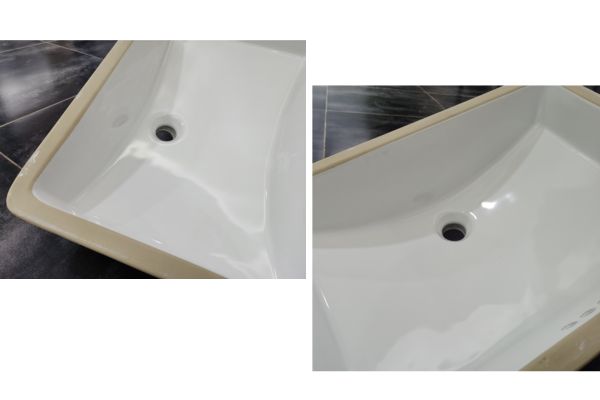

Faucets:
- Budget: Basic casting, minimal machining
- Mid-Range: Better casting quality, standard machining
- Premium: Superior casting and extensive machining
- Luxury: Advanced casting or forging, precision machining
Quality Control Measures
The extent of quality testing dramatically impacts the final product quality:
Budget:
- Basic visual inspection
- Minimal functional testing
- High acceptance tolerance
Mid-Range:
- Regular visual and dimensional checks
- Standard functional testing
- Normal industry tolerance levels
Premium:
- Comprehensive visual, dimensional, and functional testing
- Materials testing for key components
- Stricter tolerance requirements
Luxury:
- 100% inspection for all critical aspects
- Advanced testing including lifecycle simulation
- Extremely tight tolerance requirements
- Sample destructive testing
How Do You Identify a Product’s Quality Tier When Importing?
When evaluating products from Chinese manufacturers, here are reliable indicators of quality tier:
1. Certifications and Testing Standards
Different quality tiers typically have different levels of certification:
Budget:
- Basic local certifications
- Minimal testing documentation
Mid-Range:
- ISO 9001 certification
- Standard market certifications (CE, etc.)
- Basic test reports
Premium/Luxury:
- Comprehensive international certifications
- Additional environmental certifications
- Detailed test reports from recognized labs
2. Physical Evaluation
When you receive samples, check these aspects to determine quality tier:
Ceramics:
- Weight (heavier typically means thicker, better-quality ceramic)
- Glaze consistency and smoothness
- Evenness of edges and joints
- “Ping” sound when tapped (cleaner ring indicates better vitrification)
Faucets:
- Weight and solidity
- Smoothness of motion
- Consistency of plating
- Quality of aerator and cartridge
For more detailed inspection guidelines, refer to our Quality Control Guide for Ceramic Bathroom Sanitary Ware.
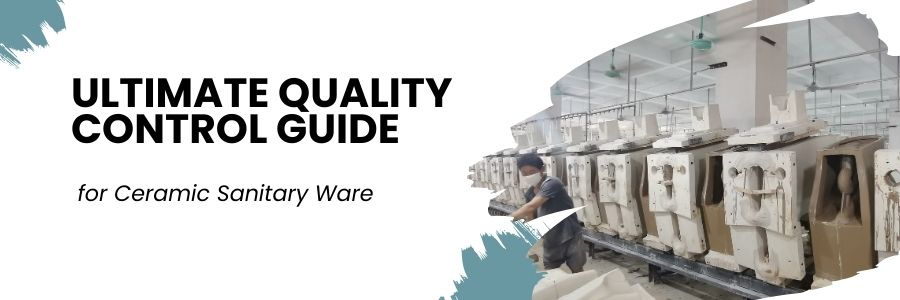

3. Factory Assessment
The manufacturing facility itself often indicates quality capability:
Budget:
- Basic workshop setup
- Limited automation
- Simple testing facilities
Mid-Range:
- Proper factory layout
- Some automation
- Standard quality control department
Premium/Luxury:
- Modern, clean manufacturing facilities
- High degree of automation
- Sophisticated testing laboratories
- R&D capabilities
If you’re planning to visit factories in China, check out my guide on How To Find A Reliable Sanitary Ware Supplier In China for tips on what to look for during factory tours.
Quality Comparison Table: What Each Tier Offers
| Feature | Budget Tier | Mid-Range Tier | Premium Tier | Luxury Tier |
|---|---|---|---|---|
| Ceramic Body | Thinner walls, more porous | Standard thickness, decent density | Thick walls, high density | Optimal thickness, perfect density |
| Glaze Quality | Basic, may have pinhole issues | Good, even coverage | Excellent, smooth finish | Perfect, multiple layers |
| Mechanical Parts | Basic functionality, shorter lifespan | Standard quality, adequate lifespan | High quality, long lifespan | Top quality, extended lifespan |
| Flush Performance (Toilets) | Basic efficiency, louder | Standard efficiency, moderate noise | High efficiency, quieter | Optimal efficiency, whisper quiet |
| Water Efficiency | Basic | Standard | High | Cutting-edge |
| Design Aesthetics | Simple, functional | Good, conventional | Excellent, attractive | Stunning, innovative |
| Packaging | Basic, minimal protection | Adequate export packaging | Superior protection | Premium presentation and protection |
| Quality Control | Limited | Standard processes | Comprehensive | Exhaustive |
| Warranty | Minimal or none | 1-2 years | 3-5 years | 5+ years |
Which Quality Tier Is Right for Your Business?
The right quality tier depends on your specific business model and target market:
For Wholesalers and Volume Distributors
If you’re selling to contractors and builders:
- Mid-Range Tier often provides the best balance of quality and price
- Consider having a Premium Tier option for upscale projects
- Budget Tier products can work for specific market segments but carry reputation risks
For Retail Businesses
If you’re selling directly to consumers:
- Focus on Mid-Range to Premium Tiers for better customer satisfaction
- Luxury Tier products can differentiate your offering and increase margins
- Be cautious with Budget Tier products as they may lead to returns and complaints
For Project Contractors
If you’re sourcing for specific projects:
- Match the tier to the project category (budget apartments = mid-range, luxury condos = premium/luxury)
- Consider the expected lifespan of the installation
- Factor in maintenance and replacement costs when calculating total project costs
For more insights on sourcing for commercial projects, watch for my upcoming article on Commercial vs. Residential Sanitary Ware: Sourcing Guide for Project Contractors, which will dive deeper into project-specific requirements.
How Can You Balance Quality and Price When Importing from China?
Based on my years of experience, here are strategies to maximize value when importing bathroom products:
1. Mix Tiers Strategically
Not every bathroom component needs to be in the same quality tier:
- Invest in Premium/Luxury for highly visible or frequently used items (faucets, toilets)
- Consider Mid-Range for less visible or less critical components
- Avoid Budget Tier for items where failure would cause damage (faucets, shower valves)
2. Negotiate Better Quality at Intermediate Price Points
Many manufacturers can adjust specific aspects of quality without moving to an entirely new tier:
- Request upgraded components in specific areas (better flush valves, superior cartridges)
- Negotiate for better packaging while keeping the base product the same
- Ask for enhanced quality control at a modest price increase
3. Consider Total Cost of Ownership
The initial price is just one factor in the total cost:
- Higher quality products typically mean fewer warranty claims
- Better packaging reduces damage during shipping
- Superior products command better prices and enhance your brand reputation
4. Develop Long-term Supplier Relationships
Building strong relationships with manufacturers can yield quality benefits:
- Preferred customers often receive better quality control attention
- Long-term partners are more willing to address quality issues
- Established relationships make continuous improvement more achievable
For more on building manufacturer relationships, see the supplier relationship section in my Ultimate Guide to Chinese Sanitary Ware Brands.
FAQ
1. How much does material quality affect the lifespan of bathroom products?
Material quality is perhaps the single biggest factor in product longevity. Higher-grade clay and better vitrification in ceramics can double or triple the lifespan of a toilet or sink. For faucets, superior brass alloys and better cartridges can extend functionality from 2-3 years to 10+ years. The initial cost difference is rarely proportional to the lifespan increase, making higher-tier products often more economical in the long run.
2. Can I trust the quality tier descriptions from manufacturers?
Take manufacturer tier claims as a starting point, not gospel. Chinese suppliers sometimes overstate their quality positioning. Always verify through samples, certifications, and if possible, factory visits. Third-party inspection services can provide objective assessment of quality tier. Our Quality Control Guide provides detailed verification steps.
3. Are there regional differences in quality tiers within China?
Yes, significant regional specialization exists. Guangdong province (especially Foshan) generally produces higher-tier products with better quality control. Chaozhou specializes in ceramic production across multiple tiers. Manufacturers in Tangshan (like Huida) tend to offer value in the budget to standard tiers. Always consider regional strengths when sourcing specific product types.
4. How do Chinese premium tiers compare to European or American products?
Chinese premium and luxury tier products now rival Western brands in quality while typically offering better value. The gap has narrowed dramatically in the past decade. Chinese luxury tier products often incorporate more advanced technology (especially in smart toilets) than their Western counterparts. The main advantages Western brands still maintain are in design originality and brand prestige.
5. What’s the best way to verify the actual quality tier before placing a large order?
Always start with samples—ideally multiple samples from the same production run to check consistency. Consider having samples tested by a third-party laboratory for critical specifications. For larger orders, a factory audit focused on quality systems is highly recommended. Finally, always arrange a pre-shipment inspection before final payment.
6. Is it worth paying more for premium tier products as an importer?
This depends entirely on your business model and customer base. Premium products offer better margins, fewer customer complaints, and strengthen your brand reputation. However, they require a customer base willing to pay for quality. Many successful importers offer multiple tiers to serve different market segments, using premium products as their flagship offering.
Conclusion
Understanding the different quality tiers available from Chinese bathroom product manufacturers puts you in a stronger position to make smart sourcing decisions. The right tier isn’t always the highest—it’s the one that best matches your business model, customer expectations, and price points.
Remember that you’re not just importing products; you’re selecting the foundation of your business reputation. Quality issues become your problems once the products reach your warehouse. Investing in appropriate quality upfront nearly always pays dividends in customer satisfaction and reduced headaches down the road.
If you’re considering developing your own branded line of bathroom products with Chinese manufacturers, the quality tier decision becomes even more critical. Watch for my upcoming guide on How to Develop Your Own Bathroom Product Line with Chinese Manufacturers where I’ll cover how to specify quality requirements for custom productions.
What quality tier makes the most sense for your business? Have questions about specific quality indicators? Drop a comment below or contact me directly for personalized advice on your importing journey.
This article was last updated in April 2025 based on current market conditions and manufacturing standards in China.

